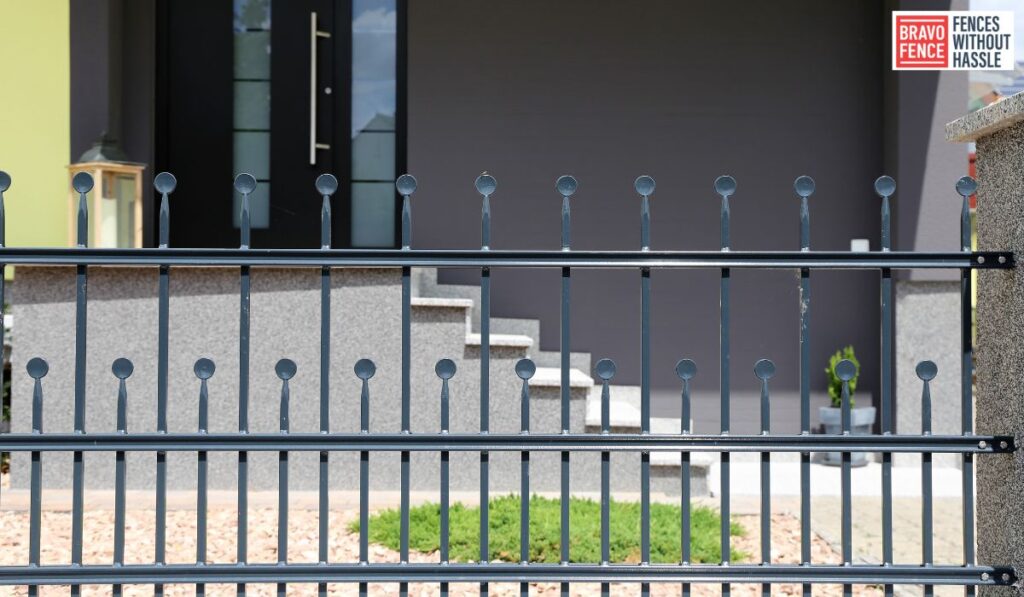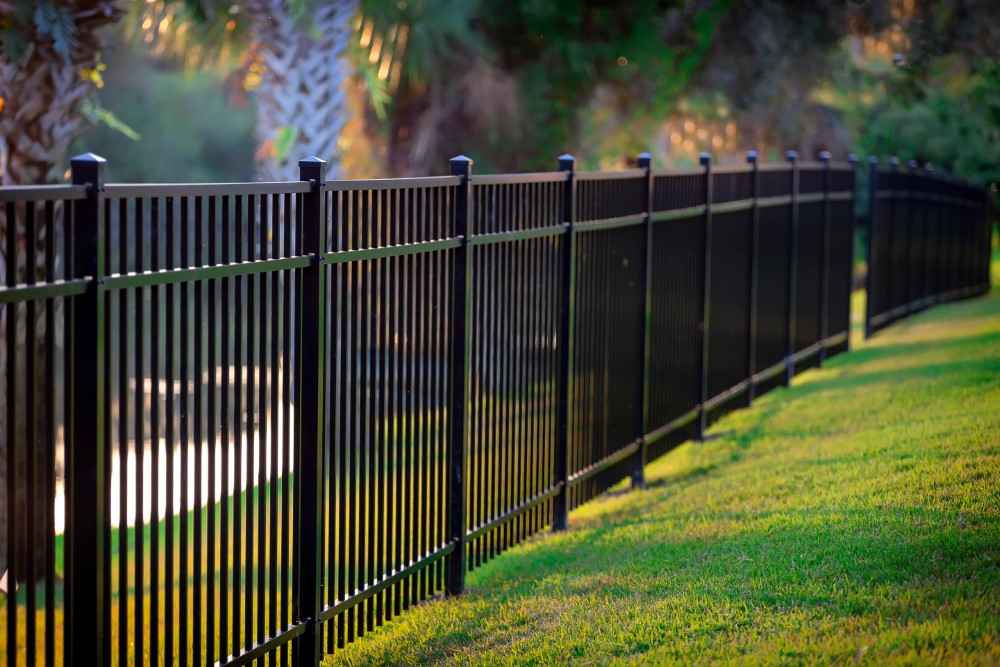
What You Need to Know When You’re Planning a New Fence
Are you planning a new fence? Congratulations!
A new wall is a great way to improve the look and value of your home.
Whether replacing an old wall or starting from scratch, a new fence is always an improvement.
We know you have many options when planning a new bar, which can seem overwhelming.
You have choices about materials, design, fence height, colors, and even the exact location of the new fence.
You do not need to worry if you feel over your head.
A Bravo Fence Company consultant is happy to work with you to plan the fence of your dreams.
Contact Bravo Fence Company today to start planning your new wall.
Where Will Your New Fence Be Located
Before planning anything else, you must know exactly where your fence will be. We know this isn’t the fun part.
That will come later when you get to start choosing colors and designs. But it may be the most significant decision you make.
If you plan to replace an existing fence, put the new one in the same spot. If you plan a new wall, you have more options but must work carefully. Many homeowners want to install a fence to close the perimeter of their property.
It’s a popular and great way to use your wall, but be careful.
Before you mark the edge of your property, you need to know exactly where that edge is.
If you overstep the boundaries of your property by even a few inches, you may have to take the whole thing down.
We would never want to install a fence only to have it torn down, so we always follow the guidelines precisely.
To locate the boundaries of your property, you will need plans from a surveyor.
If you are lucky, you have the original documents that came with the deed to your home, which should include a survey.
You can get one from the city if you’ve been in your home for a long time and aren’t sure where your survey is.
If all else fails, you can have a surveyor from your town or county come to your home and prepare new plans.
What Material Should Your New Fence Be
The first step in the design process is selecting the material for your new fence.
At Bravo Fence, we specialize in wood, aluminum, steel, chain link, and vinyl fences.
The material you choose will have a lot to do with the function of your new wall.
Other factors include the styles of the houses around you.
While it is not a requirement (unless your HOA has regulations), planning a new fence to fit in with your neighbors is always a good idea.

If your neighborhood is mostly wood and vinyl fences, avoid chain links visible from the street.
But if chain link is standard for your neighborhood, it may be a great, cost-effective solution for your home.
The same is valid for steel and aluminum fences.
Steel and aluminum can both mimic the look of classic wrought iron.
A wood or vinyl fence may look out of place if you live in a neighborhood where wrought iron is the norm—common in more urban settings.
Considerations When Selecting a Material
Matching your setting is just one consideration in planning a new fence.
You should also consider your budget, your desired design, and the function of your wall.
Wood is a classic material for privacy fences.
It is vital, solid—no peeping toms— and ages well.
Bravo Fence offers pressure-treated pine, cedar, and composite wood fences.
We recommend aluminum or steel if you want a vintage or high-end look.
A steel fence is highly secure, and aluminum is not far behind.
Many design options exist for these metal fences, and the possibilities differ entirely from those for wood.
If you like the look of wood but want less expensive and with less maintenance, you should consider vinyl.
Vinyl fences have come a long way.
They can look like wood but without the same aging and maintenance concerns.
Chain link is robust and cost-effective.
It is also easy to repair if it gets damaged.
Chain link is an excellent solution for keeping pets contained.
With added slats, it can provide a lot of privacy, too.
Choosing a Color, Design, and Height
This is where planning a new fence gets fun.
Once you’ve finalized your fence’s location and material, you can start picking out colors and designs.
The options can seem overwhelming, but consider it like picking paint colors for a new home.
It should be fun but also well thought out and carefully considered.
Wood Fence Designs
If you are building a wood fence, you have several options.
First, determine how transparent you want your wall to be.
If you are making a privacy fence, you probably want a solid fence.
You can also choose semi-solid borders that have small gaps.
There is also a wide selection of tops for your wood fence.
The most straightforward top is just a straight cut.
But you can also choose a variety of curved and mitered tops.
Some barriers include specialized tops with lattice and other designs about the solid part of the fence.
Posts can also be fitted with various finials and different decorative caps.
If you are building a more decorative fence or just marking a boundary, you can go more transparent.
Picket and split rail fences are two popular styles of pleasing fences.
Picket fences are trendy in the front yard of cottage-style homes.
They are also popular in many classic ranch-style suburban dwellings.
Picket fences are typically ornamental and usually at most four feet tall.
36″ and 48″ picket fences are standard.
If your home is a little more rural or has a rustic style, split rail can complement your home.
Split rail is standard on farms or around corrals.
There are quite a few split rail fences, ranging from sleek and modern to unfinished and rustic.
Split rail fences are typically lower than privacy fences, three to four feet tall.
A two-rail wall usually measures 36″ to the top of the rail, while a three-rail fence is usually 48″ tall.
A four-rail wall can sometimes be five feet tall, but four-rail borders are uncommon.
Aluminum and Steel Fences
Aluminum and steel fence designs range from the sleek and modern to the classical and ornate.
One of the most popular uses of metal fences is to mimic the look of traditional wrought iron.
A wrought iron look-alike fence with curves, designs, and decorative caps can be as ornate as you like.
Metal fences are often painted black, but you can select white or other colors depending on your style.
Many traditional designs include finials that are painted gold.
For a more modern look, aluminum and steel fences can have straight, clean lines and minimal or no ornamentation.
A typical modernist metal fence will include sleek black posts and matching rails.
However, many colors and specific styles are available.
Chain Link Fences
Residential chain links are not limited to the plain gray fencing in many commercial applications.
There are two primary methods for dressing up a chain link fence.
The first is to cover the chain link in vinyl coating.
The coatings come in many colors and can soften the chain link, making it less industrial-looking.
Another option is to place vertical or diagonal slats in the chain link.
The slats come in many colors, adding color and privacy to your fence.
Chain links can also be painted, which expands your color option to almost any color you can imagine.
Chain link comes in rolls that range from three feet to twelve feet tall.

Three or four feet is standard for a front or side yard.
Consider a six-foot fence if you plan to add slats and use your chain link fence as a privacy fence.
Taller fences than six feet are uncommon in residential settings.
Answering Your Questions About Planning a New Fence
Planning a new fence can seem overwhelming.
There are endless choices, and sometimes the differences aren’t apparent.
When you work with Bravo Fence Company, we will help you navigate these choices to design the perfect fence.
Conclusion:
As you enhance your property’s security and aesthetics through metal fence installation, remember that the choice of material is as crucial as the installation process.
Metal fences, whether wrought iron, aluminum, or steel, offer unparalleled durability, versatility in design, and low maintenance compared to other materials.
Their longevity and ability to withstand various environmental conditions make them an excellent investment for any property.
While installation might seem daunting, proper planning, adherence to local regulations, and professional assistance can ensure a seamless and long-lasting result.
From preparation to the finishing touches, each step contributes to not just the fence’s functionality but also its visual appeal.
FAQs:
How long does a metal fence typically last?
Metal fences, such as wrought iron or aluminum, are known for their durability and can last anywhere from 20 to 50 years, depending on the material, maintenance, and environmental factors.
Are metal fences challenging to maintain?
Metal fences generally require minimal maintenance. Regular inspections, cleaning off dirt and debris, and occasional rust prevention measures are usually sufficient to keep them in good condition.
Can I install a metal fence or hire a professional?
While it’s possible to install a metal fence on your own, it can be labor-intensive and requires specific tools and skills. Hiring a professional ensures proper installation, saves time, and often comes with a warranty.
Do metal fences work well in all climates?
Different metal types like aluminum, steel, and wrought iron are designed to withstand various weather conditions. However, proper maintenance, such as rust prevention in humid environments, is essential to prolong their lifespan.
Are there height limitations for installing a metal fence?
Check local building codes, as they often stipulate height restrictions for fences. Typically, residential areas may have height limitations to maintain neighborhood aesthetics and safety regulations.
Can I customize the design of my metal fence?
Yes, one of the advantages of metal fences is their versatility in design. Many companies offer customization options in height, style, ornamental details, and finishes to suit individual preferences.
How do I choose the right type of metal fence for my property?
Consider factors like the desired level of security, aesthetic preferences, maintenance requirements, and budget. Consulting with a fencing professional can also help you select the best fit for your needs.
Will a metal fence increase my property’s value?
Yes, a well-installed and maintained metal fence can add value to your property by enhancing its curb appeal, security, and overall aesthetic appeal.
Tags: Complete Guide to Fence Construction Planning, Complete Guide to Organizing A New Fence Project, Complete Guide to Preparing For Fence Installation, Everything You Need to Know About Creating A Fencing Scheme, Explore Helpful Resources on Plotting A New Boundary, Explore Helpful Resources on Strategizing For A New Fence, Inspiration and Tips on Developing A Fencing Blueprint, Top Ideas and Insights About Designing A Fence Layout, Top Ideas and Insights About Drafting A Fence Installation
